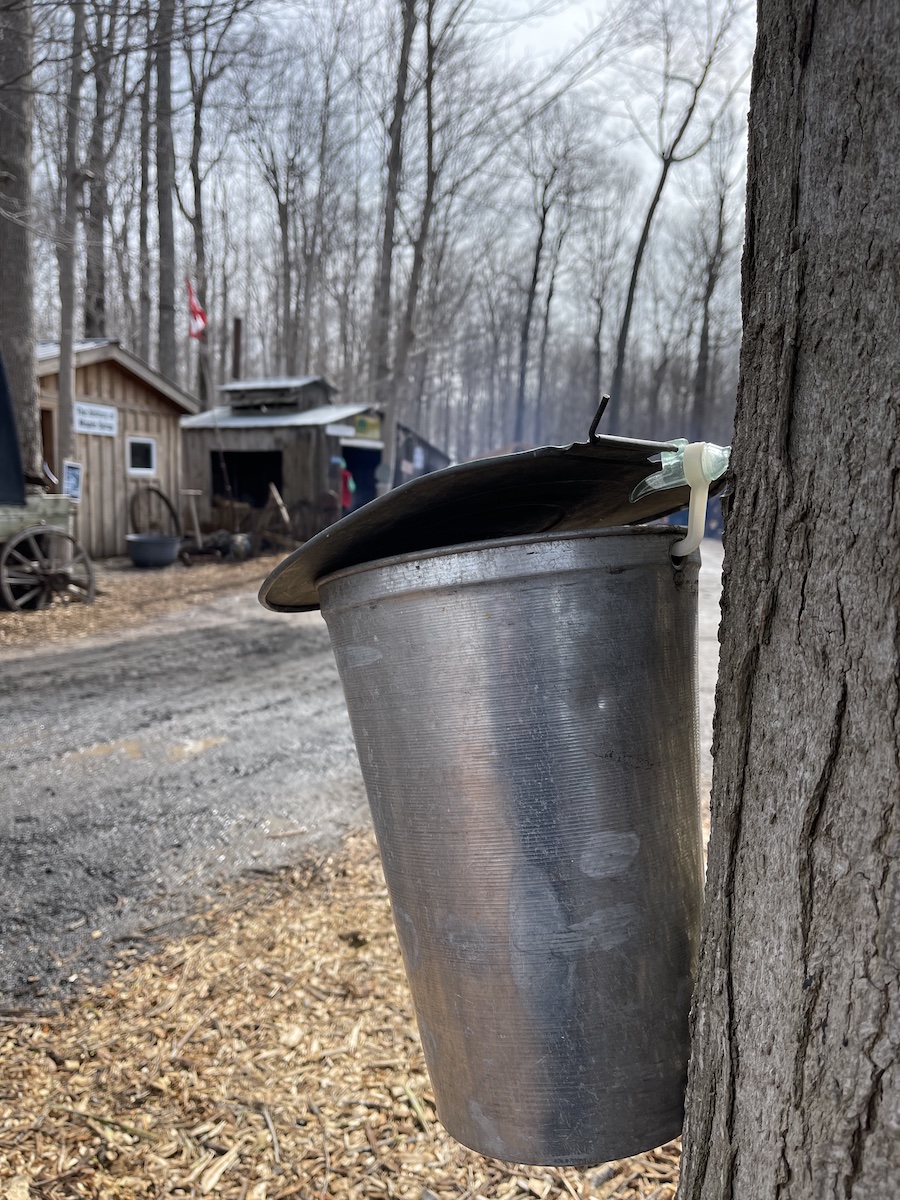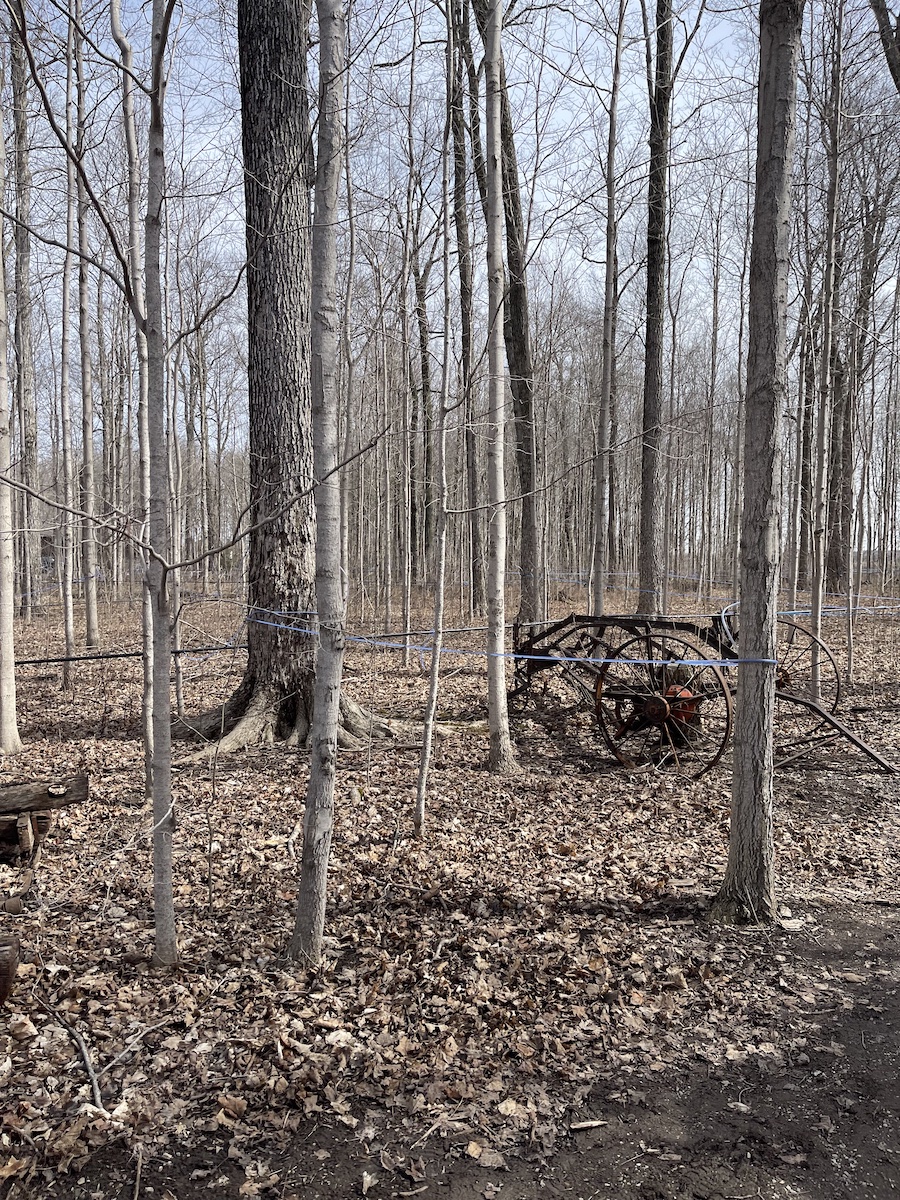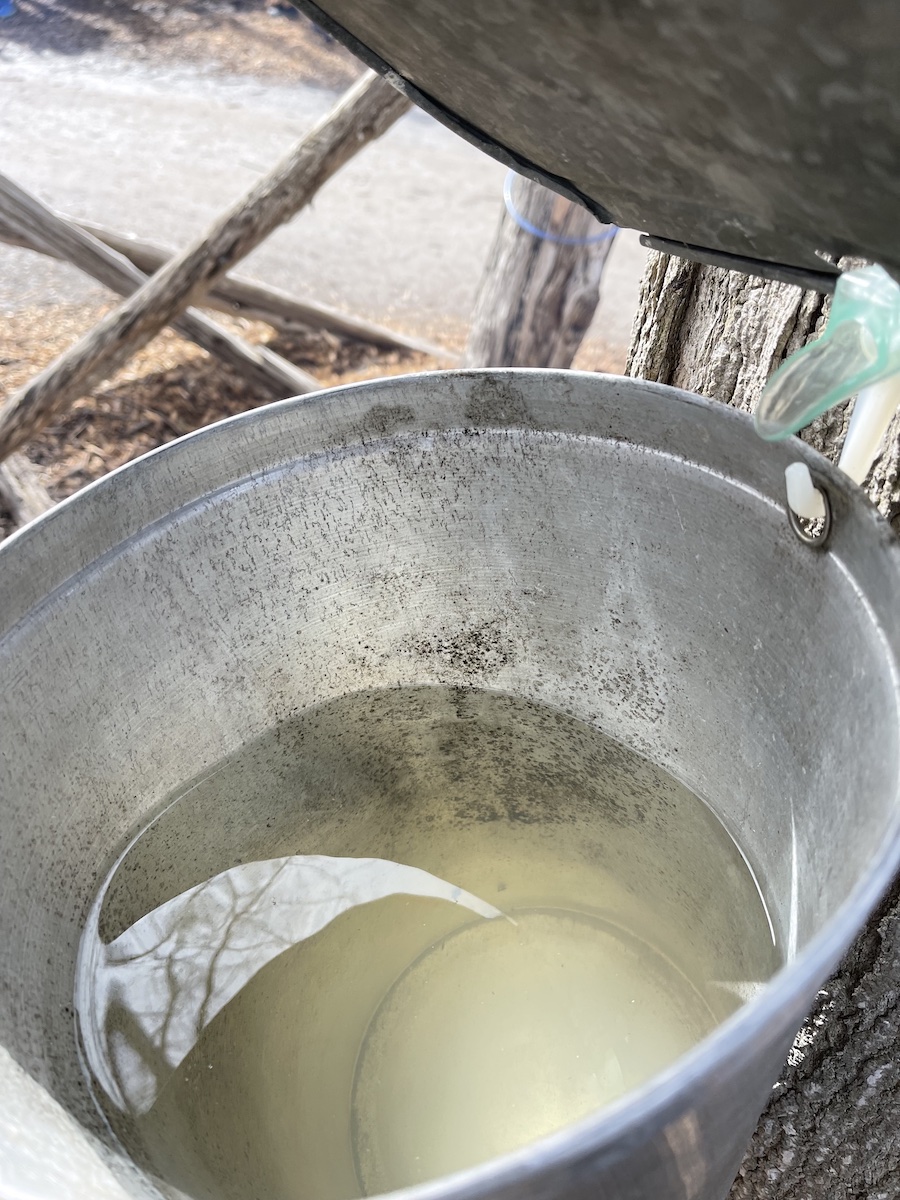The sap has been collected and boiled down, and now thousands of liters of maple syrup are being bottled and sold across Canada. The nation’s favourite sweet treat is enjoyed in many ways. It’s used to make candy, taffy, and often acts as a flavour in many other food items.
You may have even received a bottle of locally-produced maple syrup from us at an event or during the holiday season.
But have you ever wondered how it’s made? Maybe you’ve seen the spouts on trees in February and March and the outdoor pots boiling down the sap at sugar shacks. But what else is happening behind the scenes?
When the Sap Starts to Flow
Sap starts to flow in maple trees towards the end of winter—around mid-February to mid-March, depending on the weather’s mood. Sap starts flowing when daytime temperatures are above freezing and when they dip below 0 degrees at night. Once the day-and-night cycle is right, you’ll see taps going into trees.

A spile has been inserted into this tree to divert sap into the connected bucket.
To collect sap, syrup producers will select maple trees that are old and big enough to harvest from. The sugar maple is the most common type to use, but other species of maple can be used as well. Next, harvesters will drill a small hole and insert a spile, which acts as a spout. The sap will pass through the spile and into a collection bucket hung from the spile. Depending on the tree and temperature conditions, the sap will come out in a slow and steady trickle or surprisingly quickly.
Bigger operations have moved on from manually collecting buckets from individual trees. Instead, they’ll connect the spiles and buckets with tubes running throughout a forest so the sap can collect at a central location.

The blue tubing is connected to spiles in maple trees and runs throughout this forest to a central location.
Once the sap is collected, it’s filtered to remove any pieces of debris, like leaves or bark from the tree, that might have fallen in while the sap was running.
Boiling it Down
It takes a lot of sap to make a liter of syrup!
You’ll need about 40 liters of sap to make one liter of syrup. Sap is mostly water, and it takes a long time to boil down. Producers have a few days to start the boiling process. Sap is perishable and could start to grow mold if left too long.

Sap is clear with a slight tint. Once boiled down, it becomes the familiar golden-honey brown colour associated with maple syrup.
So, pretty soon after the sap has been collected, it’s placed in large pots over a heat source to start reducing the sap into syrup. Depending on the size of the operation, producers may have specialized equipment to boil down the syrup, while small operations may use big pots on a stove or over a wood fire outside.
Once the syrup reaches the desired temperature and colour, it’s taken off the heat, cooled, and bottled.
Environmental Impact
Quebec’s maple forests are used for harvesting sap for a few weeks in the winter, but during the rest of the year, they are regular forests contributing to the local environment and ecosystem.
According to Pure Maple from Canada, there are 1.4 million hectares of maple forests in Quebec which are home to “a variety of species through protected habitat, supporting rich biodiversity for years to come.”
These forests are also home to dozens of threatened, vulnerable and likely to be designated as threatened or vulnerable wildlife and plant species. Because of their importance to the local and national economy, these forests are protected, meaning the plants and wildlife are protected as well.
The forests also absorb and store carbon from the air, helping to reduce the impact of emissions on global climate change.
The Perfect Gift
According to the Quebec Maple Syrup Producers organization, 211,000,000 lbs of maple syrup were produced last year by 13,300 producers.
The syrup is sold in bottles, barrels, and is used in other food products.
At Pattern, we’re proud to support maple syrup producers across Quebec and the rest of Canada. We’ve purchased syrup from many producers over the years and given syrup as gifts to landowners and community partners.